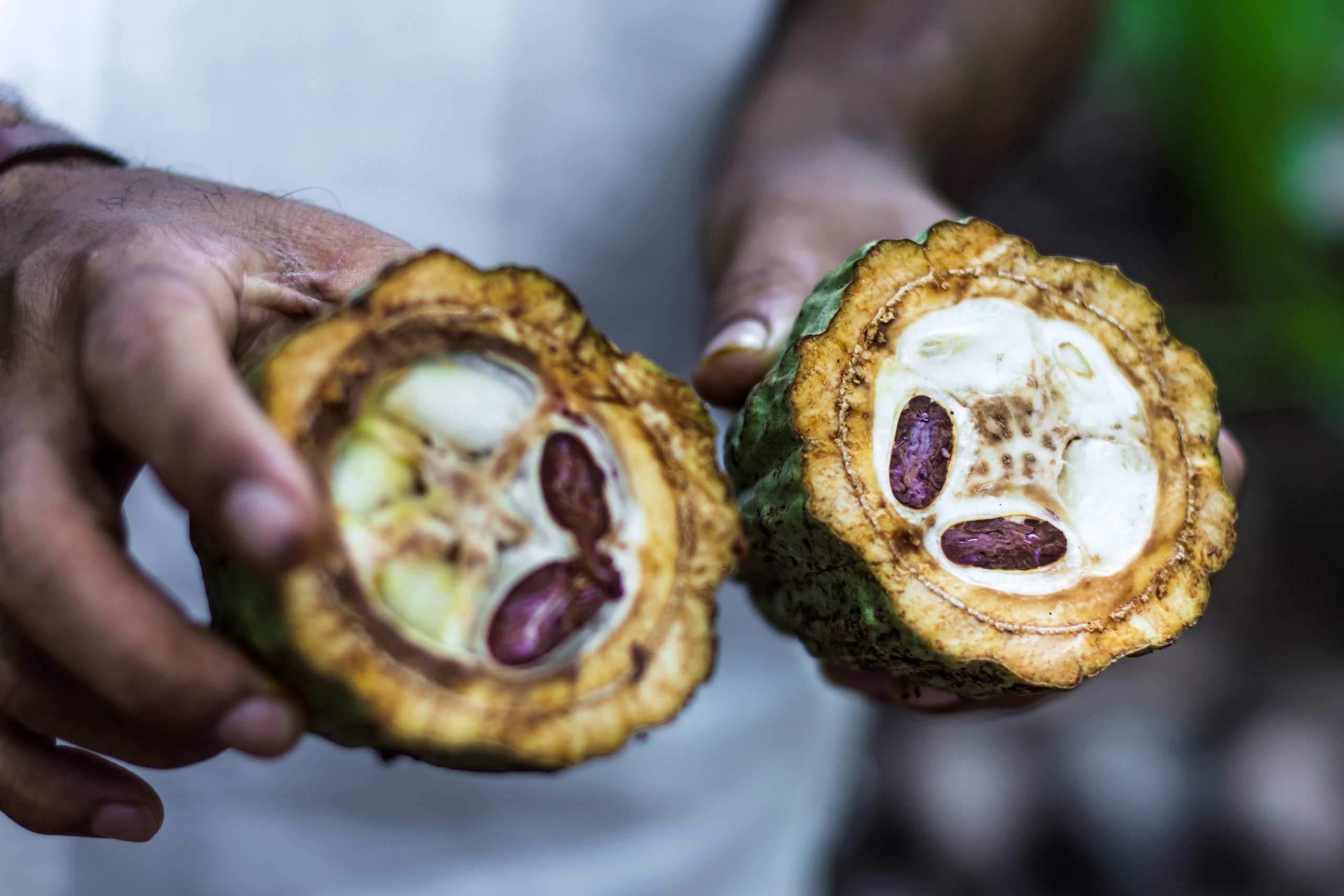News
Cocoa agroforestry could help Côte d’Ivoire achieve 20% forest cover target

News | Jan 2022
A new report has highlighted the potential for targeted cocoa agroforestry implementation to help restore forest cover in the biggest cocoa producing country in the world.
The study from the UN Environment Programme World Conservation Monitoring Centre (UNEP-WCMC), with the UN REDD Programme and the CocoaSoils initiative, outlines the scope and priority areas for integrating cocoa agroforestry across Côte d’Ivoire, the world’s biggest cocoa grower.
The expansion of cocoa farming – as well as crops such as rubber, coffee and palm oil – has been a driving force of deforestation in Côte d’Ivoire, with forest cover in the country now less than 9%, compared to 15% in the mid-1980s.
However, the new report shows cocoa could play a major role in helping achieve the country’s forest cover restoration objectives, if local farmers are enabled to rollout agroforestry.
The original cocoa growers, in South America, intuitively farmed the beans under forest cover. However, the ever-growing global demand for cocoa has led to many countries farming it in monoculture systems, with plants getting little or no shade from neighbouring trees. While monoculture farming can provide a high cocoa yield in the short-term, it is demanding of labour and resources and leaves farmers vulnerable in their dependence on a single crop.
Now, cocoa production practices are coming full-circle, with experts agreed that agroforestry – where trees grow among crops – helps maintain soil health and gives useful shade, as well as providing growers with extra income sources from the trees, such as from fruit and timber.
Côte d’Ivoire has ambitious reforestation plans, hoping to double its forested area up to 20% by 2030. To achieve this goal, Côte d’Ivoire is working on natural forest restoration, but also has targets around the contribution of agroforestry and forest plantations to rehabilitate one million hectares of cocoa land in degraded forest reserves and promote agroforestry in one million hectares of cocoa, rubber and oil palm in rural areas.
To help progress towards these targets, researchers set out to map how far introducing widespread cocoa agroforestry could boost tree cover across the country. They combined and analysed seven major land, forest and cocoa databases, as well as consulting with local officials, researchers, civil society and major cocoa corporates.
They found that across rural areas of Côte d’Ivoire, shade trees could be introduced or increased on 1.8 million hectares of full-sun/low shade cocoa farmland to meet agroforestry definitions, well exceeding the one million hectare national rehabilitation goal.
In addition, within highly degraded forest reserves more than 500,000 hectares of full-sun/low-shade cocoa plantations were identified, as well as 1.36 million hectares of degraded/open non-cocoa land with low levels of canopy coverage.
Assuming the full potential for cocoa agroforestry is met in these areas, implementation could increase forest cover to 20% of Côte d’Ivoire, meeting the country’s forest cover restoration goal.
Meeting the potential scope for cocoa agroforestry would also mitigate greenhouse gas emissions, with new trees potentially helping to store an extra 120 million metric tons of carbon within the rural areas and classified forests where cocoa is currently grown.
The study’s findings give the estimated maximum potential to rollout cocoa agroforestry. Local factors that would influence implementation include land ownership, infrastructure development needs and the protection of non-forest ecosystems, such as important grasslands.
The report emphasises that agroforestry integration plans should focus on areas where it improves ecosystem services and biodiversity – likely to be close to existing forests and settlements – to ensure benefits to communities and biodiversity, and calls for buyers and civil society leaders to support cocoa farmers. It also notes that, where feasible, degraded natural forests should be restored rather than converted to cocoa.
Marieke Sassen, a biodiversity and cocoa specialist at UNEP-WCMC and one of the report’s lead authors, said:
“Our findings definitively show that there is great geographical potential for farming communities, corporations and civil agencies to progress Côte d’Ivoire’s reforestation ambitions by increasing tree cover in or around the country’s cocoa plantations.
“However, more work is needed now to plan the best way to rollout cocoa agroforestry to ensure maximum benefits to communities, as well as for carbon storage and biodiversity conservation. Ultimately, cocoa farmers will also need support and improved incentives for large scale implementation to be successful.”
Report co-author Dr Peter Umunay, Africa lead for the UN REDD programme, added:
“This report is an essential step towards identifying potential trade-offs between current and future cocoa plantation expansion, forest conservation, and land use planning in Côte d’Ivoire.
“The findings will be useful in supporting the country’s commitment to decoupling agricultural production from deforestation and restoring to 20% of forest cover land area by 2030.”
Find out more from the UN-REDD Programme about promoting cocoa agroforestry in Côte d’Ivoire, and the role of governments and the private sector in helping to drive forest-positive agriculture.
Have a query?
Contact us
communications@unep-wcmc.org
